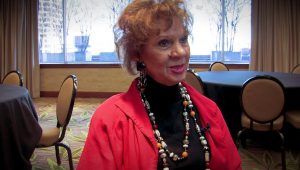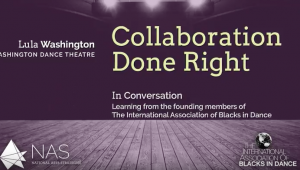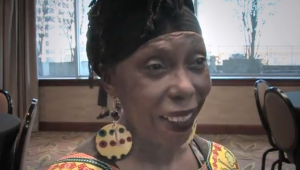Over the past nine months, I’ve witnessed something truly remarkable take shape: a network of committed givers in the arts. Not a network that operates on a tit-for-tat basis, not a group that invests in others with the goal of personal gain in the long run, but individuals who are just as dedicated to advancing each other’s work as they are to advancing their own. This network is the Creative Community Fellows cohort.
If you’ve ever been involved in an arts network (or, heck, any job-focused affinity group) you know this is rare. The flow of information, connections and opportunities is stymied because we think these things are in short supply. There are only so many good arts jobs in my town, only so many fellowships available, only so many bright young things I want my mentor to know about. And often when something good is shared within a network, the giver is motivated by what she’ll get down the line in return.
Adam Grant, Wharton Business School professor, calls these people who operate on a trading basis, “matchers,” and those who hoard opportunities, “takers.” Adam discusses network dynamics in his book Give and Take (a must-read, in my opinion). Adam writes that success in today’s world is increasingly dependent on how we interact with others. You might assume that those who try to claim the most value for themselves end up on top while those who prioritize others’ needs finish last (just like nice guys do). Adam argues that it’s actually the givers – those who contribute freely to others without concerning themselves with personal gain – who achieve extraordinary success. (Caveat: not all givers are so successful. There are certain characteristics that make some more successful than others. Read the book!)
I want to emphasize that givers are pretty rare. Most people are matchers, and (thankfully) takers are also few and far between.
I didn’t fully realize the uniqueness of the Creative Community Fellows’ network dynamics until we were several months into the program. The Fellows met in Palo Alto in January to deliver their pitches to a panel of funders. Because our Fellows were traveling so far for such a short convening, the NAS team wanted to maximize the amount of time each Fellow got to spend pitching and receiving feedback from the funders. Designing the convening with this priority in mind meant we had to run pitch sessions concurrently, making it impossible for Fellows to see all the pitches. Still, we thought each Fellow would prefer having more time focused on his or her own pitch.
Boy, were we wrong. What we didn’t fully grasp about this group is that they value supporting each other above garnering support for themselves. What if certain presenters have no other Fellows present in the audience to support them? Sure it’s beneficial to hear feedback from funders, but how can we finish this program without properly celebrating each other’s successes?
I was surprised by this other-oriented reaction. I was also deeply moved. Suddenly it occurred to me why working with the Creative Community Fellows has been so refreshing and motivating: These people are not in it for personal gain. They’re working for the greater good.
They have a Facebook group where it’s not uncommon for someone to post “Hey check out this amazing grant program I just applied for. You should apply, too!” or “I’ve got a connection to this really influential person that could help you achieve your goals. I’d be happy to make a connection.”
They knowingly create competition for themselves.
There are many reasons why this could be happening. Perhaps they are natural-born givers or maybe it’s because in a remarkably short period of time they’ve come to care so much about each other.
Or maybe it’s because they’re invested in the fate of the entire field, and that matters more than their individual success.
One of the funders in attendance at the Palo Alto event stressed to me how rare this group dynamic is. He works with networks of talented change-makers and he usually finds that they fight over slices of the same pie. It’s a zero-sum game to them.
This got me thinking: how does a sector made up of individuals with taker and matcher mindsets affect our organizations? Our ability to serve our communities as stewards of public good? David Dower wrote about our sector’s fixation on competing for what we perceive is a very limited pool of resources in his HowlRound post The Scarcity Matrix (which is also a chapter in my bible and everyone should read it). He writes that we’ve let ourselves become convinced that we should be “sparring over scraps” rather than pooling expertise and resources to create new value. By acting as takers and matchers, we are weakening the sector.
David’s writing on scarcity was inspiring and stirred up a lot of questions. It left me wondering what a call to action might look like. How would we go about shifting the mindset of leaders to be more open to giving?
I think it starts by rewriting the formula for success that’s been taught to us. Adam Grant asserts that it is indeed possible to cultivate a culture of giving by making helpful acts highly visible. This was true with the Creative Community Fellows group. We intentionally included activities and structures that highlighted sharing. We built lessons into the curriculum on the importance of asking others for help. We used a “Luck Circle” to maximize your chances of getting what you need from your networks (see more on the Luck Circle here). And remember that Facebook group I mentioned earlier? It turns out that making giving visible makes giving contagious, as it becomes a part of the group’s norms. Each time a Fellow offered help in the comments section of another Fellow’s Facebook post, others would be reminded that this is a giving community.
What if our pipelines to leadership in the arts (graduate programs, emerging leaders groups, etc.) discussed individual career advancement within the context of strengthening the entire field? What if giving behaviors like sharing ideas, making introductions and giving helpful feedback were not only visible but encouraged?
Bringing people into these giving networks at early stages in their careers could have important benefits for our field. I suspect we’d see more partnerships, fewer redundancies in efforts locally and more strategic thinking about how to maximize the value arts can deliver to communities. This would lead to more opportunities for all of us.
My challenge to you is to spend 15 minutes today thinking about a giving practice you could incorporate into your routine. Perhaps it’s reserving an hour each Friday to respond to requests for help, like Creative Community Fellow Philip Graulty does. Or maybe it’s inviting a handful of people you admire to join monthly group info-sharing and idea cultivation chats.
Find what works for you and then tell NAS and the field about it. Share your experience in giving here in the comments section and on social media (#NAScollab @ArtStrategies). I can’t wait to see what comes up for you!
If the Creative Community Fellows are any indication, I’d say giving results in an expansion of the pie, rather than smaller slices for all of us.


